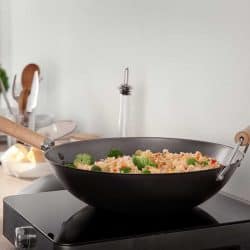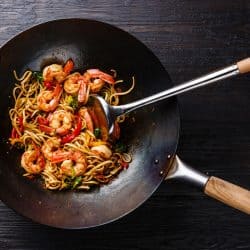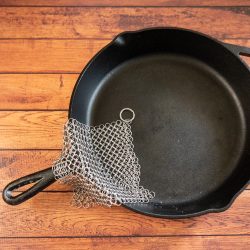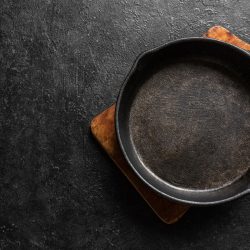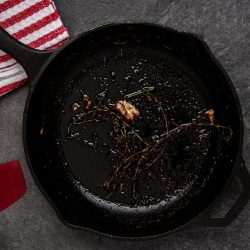A wok is a versatile cooking vessel that originated in the Chinese Han dynasty. While it's very popular for preparing Asian cuisine, it can also be used in a plethora of other cooking styles. The pan traditionally has a rounded bottom (though flat-bottomed ones are increasing in popularity) and high walls. But just how much does a wok cost? We did the research so you don't have to.
Woks vary in price. The prices range from a mere $15 to hundreds of dollars. However, a standard wok will likely cost approximately $50. The price of a wok primarily depends on its material, size, and, most notably, the brand.
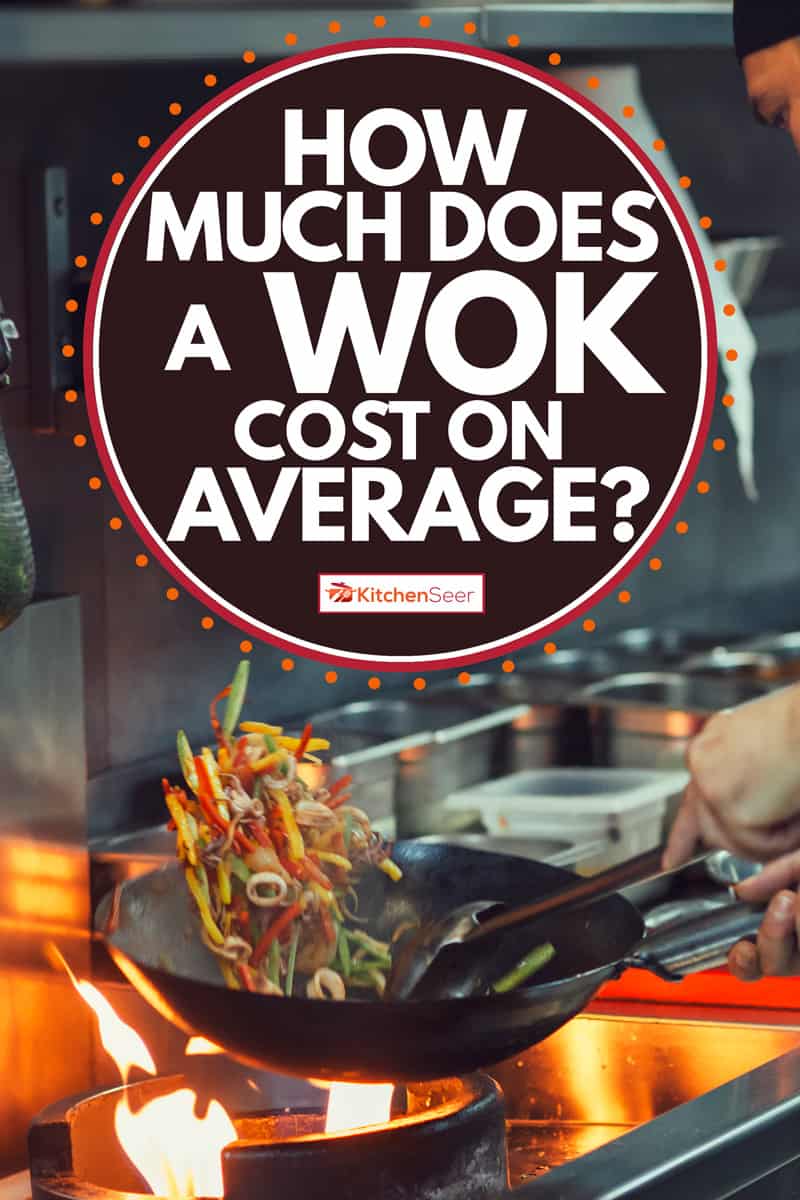
If you still have some questions about wok pricing, don't worry. In this guide, we'll explore the topic in more detail. Just keep reading!
Factors That Affect The Price Of A Wok
Here we'll talk more about the different factors that affect a wok's price point.
Material
Woks are crafted from three standard materials including carbon steel, stainless steel, and cast iron. Carbon steel and cast iron are generally the most affordable, and stainless steel models are typically pricier.
Carbon Steel
Carbon steel is the most popular material for woks. Experienced Asian cuisine chefs prefer a good carbon steel wok. This type of material heats up quickly and evenly. These types of woks do require a bit more attention, as they must be seasoned prior to being used and cleaned very well after use (use minimal soap and wash by hand!). Over time, carbon steel woks can become nonstick. It's said that carbon steel even helps to flavor the food.
12.5-Inch Diameter Carbon Steel Wok
Click here to see more on Amazon.
Stainless Steel
Stainless steel is becoming increasingly popular in all sorts of kitchen appliances. Woks are no exception. While it takes longer for stainless steel to heat up, it does so evenly. Stainless steel may be combined with other metals to help the wok heat up faster. The material is durable and this type of wok can be cleaned in the dishwasher. No seasoning is required.
12-Inch Diameter Stainless Steel Wok
Click here to see more on Amazon.
Cast Iron
Cast iron, like stainless steel, takes a while to heat up, but it does retain heat very well. Cast iron woks require seasoning before you can cook with it. If treated properly, it can also become nonstick over time. Cast iron is rather heavy, so it's more difficult to move the wok around. For this reason, a wooden wok spatula can be used to help move the food around.
12-Inch Diameter Cast Iron Wok
Click here to see more on Amazon.
Size
The standard size for a wok is between 12 and 14 inches. This size is perfect for the average recipe and family size. Smaller woks, ranging between 8 and 10 inches, may be cheaper, but they also have less capacity. Woks of this size typically make enough for one serving, whether as an entree or a side. Commerical size woks that are larger than 14 inches will cost more.
Brand
The brand of a wok can also determine the price point. From generic brands to top of the line, there are all kinds of options. Two of the most popular brands include Cuisinart and Lodge. Both of these brands carry woks in a variety of price ranges, sizes, and materials so you'll be able to find the perfect match. If you opt for a name brand wok, expect to pay accordingly.
Which Is Better: Flat Or Round Bottom Wok?
The answer to this question is determined by a few things: what type of heating element you're using, style of cooking, and favored attributes.
If you're cooking on a traditional gas or electric stovetop with a flat surface, then a flat-bottomed wok would be best. If you're cooking with a wok ring, then you can easily use the traditional round-bottomed wok. A wok ring fits over an electric coil or in the groove around the burner on a gas range. The ring forms a sort of cradle for the wok.
Stainless Steel Wok Ring
Click here to see more on Amazon.
A round-bottomed wok makes it possible to cook the food with less oil. Since the bottom is smaller than that of a flat-bottomed wok, there doesn't need to be as much oil to cover the surface. Since the heat is concentrated on the bottom, it's easy to quickly cook food there, then move it around for additional ingredients. Most wok utensils are designed to work best in round-bottomed woks as well.
Unlike flat-bottomed woks, round-bottomed woks do not warp. The heat is evenly distributed throughout the sides of the pan, so it cannot be warped. Flat-bottomed woks may have hot spots on their bottom which can lead to warping. Flat-bottomed woks do heat evenly on their bottom side.
Both flat and round bottom woks have their advantages and disadvantages, so just pick one that works best for you and your preferences. No matter which one you pick, you're getting an excellent cooking pan!
What Size Wok Should I Buy?
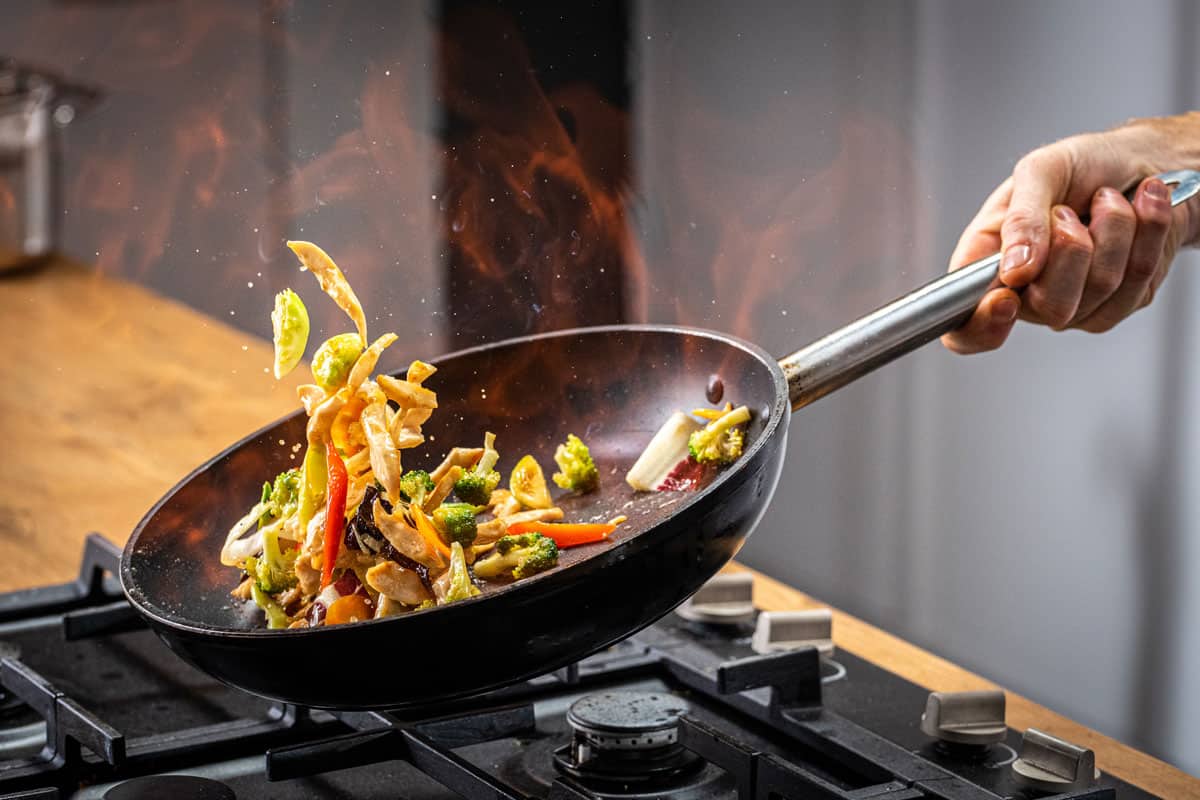
When cooking, the standard recipe makes 4 servings. With that being said, a good size wok for 4 servings has a diameter between 12 and 14 inches. Anything larger could prove difficult to store, but it's certainly not impossible. With a 14-inch wok, it's easy to toss the food around and give it a nice, even fry. A 14-inch wok is the most practical size for everyday cooking.
A wok that measures around 10 inches is rather small and is ideal for cooking for one and making smaller portions or sides. This is also a great size option for traveling and camping.
A wok that measures 18 inches or larger is considered a commercial size. These are standard for restaurants or other locations that prepare foods in large quantities.
Does A Wok Need A Lid?
While a lid isn't a completely necessary accessory for your wok, it does come in handy. Whenever you want to use your wok for steaming, boiling, or other similar cooking techniques, you'll want a lid. Wok lids should measure 1 to 2 inches smaller than the diameter of your wok. This ensures that the seal is adequate and traps in the steam. Glass, metal, or even wooden lids are available on the market.
What Type Of Wok Is Safest?
All woks are generally safe. However, when cooking with a wok, extremely high heat is used, so you'll need to use caution around the pans anyway.
In terms of durability, cast iron has the highest risk of breaking or causing great damage if it is dropped. If you have a glass stovetop, a cast iron wok could scratch or crack it if it's dropped heavily onto the surface. Cast iron woks could also rust if they're not properly taken care of.
In Closing
We hope you now have a better idea of the pricing of woks. All in all, don't underestimate the ability of simple and basic woks! Before you go, make sure you check out these other kitchen guides:
15+ Kitchen Utensil Gift Sets For Cooking Lovers





